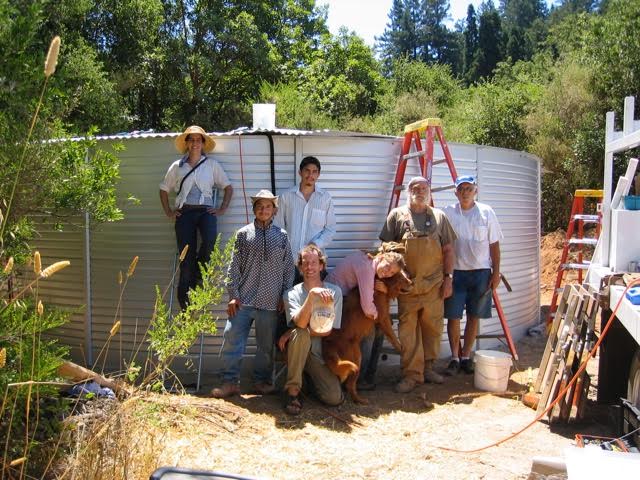While California might be facing another multi-year drought, a Marin County public school has reached a water conservation milestone: over 360,000 gallons of water saved. The water was collected and stored by a single rooftop rainwater collection system at the Lagunitas School.
The rooftop rainwater collection system was provided and installed by Turtle Island Restoration Network’s SPAWN program in 2006. It was funded in part by an Environmental Protection Agency Clean Water Act grant, installed by the school and was supported by the school board and parents.
According to Marin County Municipal Water District, the average Marin County resident uses 86 gallons of water per day. The Lagunitas School rainwater collection system has saved enough water to figuratively provide almost 350 people with enough water for a year, 12 years in a row.
“Marin County schools are managing strict budgets,” said Catie Clune, education specialist for Turtle Island Restoration Network. “Through projects like this, we’re able to save money for Marin’s schools, support valuable hands on learning experiences and reduce our overall impact on the environment and our water resources.”
According to the Marin Municipal Water District, each customer uses on average around 86 gallons per day. Through just one roofwater collection system which has saved 360,000 gallons of water over 12 years, Lagunitas School has effectively saved a day’s worth of water for almost 4,200 people.
“That’s 360,000 gallons of water that didn’t runoff and carry pollution directly into San Geronimo Creek,” said Preston Brown, watershed conservation director with Turtle Island Restoration Network. “People are hungry for practical solutions to common sustainability issues. And with clean water supplies becoming ever more strained in California, roofwater harvesting is just one of the additional tools that needs to be included in our conservation ‘toolbox’.”
The stored rainwater is used to irrigate the school’s organic garden.
“Lagunitas School has developed a wonderful organic garden, which serves as a critical resource for kids to learn how healthy food is grown,” said Clune. “And by using stored rainwater for their garden’s irrigation, they are teaching students the importance of water conservation.”
Longtime Lagunitas School Board member, Richard Sloan, helped set up the rainwater collection system in 2006.
“This is a tremendous asset for the school,” Sloan said. “I’m happy that SPAWN brought this to us and we were able to partner with them to make this work. We are saving resources and using these resources for the school. We wouldn’t have done this if it weren’t for SPAWN.”
Interpretive sign inside the Lagunitas School covered lunch shelter which captures the rainwater.
The project spurred huge community interest, leading to a partnership project between Turtle Island Restoration Network and the Marin Municipal Water District to launch the 10,000 Rain Gardens Project that supplied rainwater cisterns to local residents, libraries, community buildings, and schools throughout Marin.
“With our rainfall becoming more and more variable, water conservation must become a California way of life,” said Emma Detwiler, communications specialist for the Marin Municipal Water District. “Our children are the future stewards of our water supply, so teaching them about the benefits of conservation is of the utmost importance.”
Brown noted that the onsite rainwater collection system does not just save water, it reduces energy use as well and that energy needed to move water from reservoirs, uphill to treatment plants, and then to households burns a lot of energy.
“By reducing water use, we also help reduce our carbon footprint and fight global warming,” he said.



